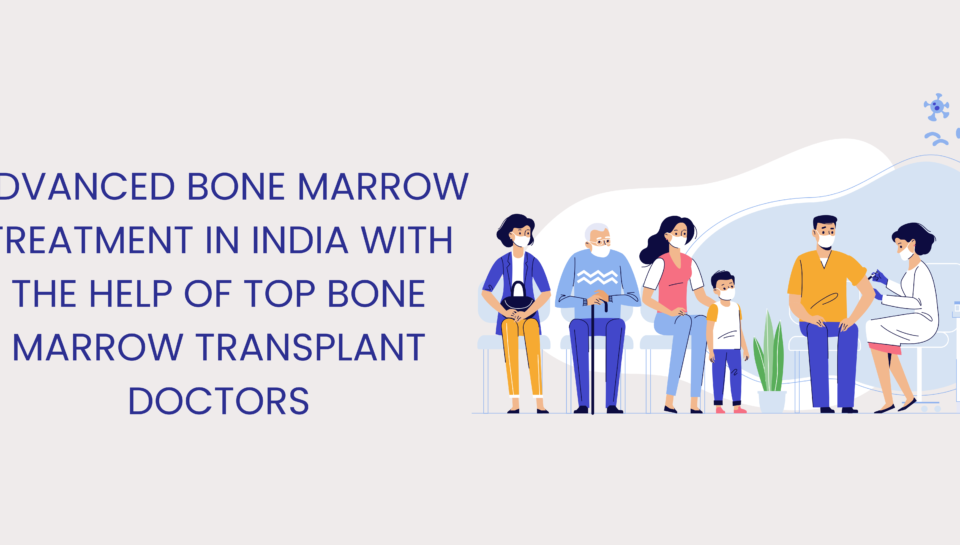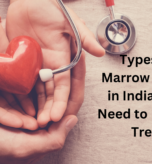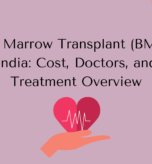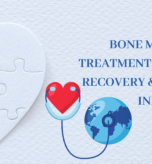Bone Marrow Transplant (BMT) is a critical medical procedure that has saved countless lives worldwide, offering hope to patients suffering from various blood disorders and cancers. India, with its world-class healthcare infrastructure, skilled medical professionals, and cost-effective treatment options, has become one of the leading destinations for Bone Marrow Transplantation. In this blog, we will explore the types of Bone Marrow Treatments in India, the top doctors in the field, the step-by-step process of undergoing treatment, and why India is the preferred destination for many patients seeking BMT.
What is Bone Marrow Transplant (BMT)?
Bone Marrow Transplant, also known as Hematopoietic Stem Cell Transplant (HSCT), is a medical procedure in which a patient’s damaged or diseased bone marrow is replaced with healthy stem cells. Bone marrow is the spongy tissue found inside bones that produces blood cells (red blood cells, white blood cells, and platelets). When the bone marrow fails to function properly, it can lead to life-threatening conditions like leukemia, lymphoma, anemia, or aplastic anemia.
BMT is considered a life-saving treatment for many patients, particularly those suffering from hematologic (blood-related) diseases. The procedure is complex and requires highly skilled medical teams, advanced technologies, and the expertise of top doctors to ensure success.
Types of Bone Marrow Transplants
There are several types of bone marrow transplants, each tailored to the specific needs of the patient:
- Autologous Bone Marrow Transplant (Auto BMT): In this procedure, the patient’s own stem cells are collected before undergoing high-dose chemotherapy or radiation therapy. After the chemotherapy or radiation, the harvested stem cells are infused back into the patient’s body to help restore the bone marrow function.
- Indications: Typically used for cancers like multiple myeloma, non-Hodgkin’s lymphoma, and certain forms of leukemia.
- Allogeneic Bone Marrow Transplant (Allo BMT): This type involves using bone marrow stem cells from a donor. The donor’s cells are genetically matched with the patient’s cells to prevent rejection. The donor may be a sibling, parent, or an unrelated individual with a similar genetic match.
- Indications: Conditions like leukemia, sickle cell anemia, aplastic anemia, and other blood-related diseases.
- Cord Blood Transplant: In some cases, stem cells can be harvested from the umbilical cord blood of newborns. These stem cells can be used to perform a transplant in patients with blood cancers or other conditions.
- Indications: Often used when a suitable bone marrow donor is not available, particularly for pediatric patients.
- Haploidentical Bone Marrow Transplant: A relatively new approach where a half-matched donor, usually a parent or child, is used. This treatment has shown promising results, particularly in cases where finding a fully matched donor is challenging.
- Indications: Used in cases where patients have no fully matched sibling or unrelated donor.
Treatment Procedures Under Bone Marrow Transplantation
The BMT treatment procedure involves several phases, each critical to the success of the transplant.
1. Pre-transplant Evaluation
Before undergoing a BMT, patients must undergo a thorough evaluation, including blood tests, imaging studies, and sometimes biopsies. The goal is to assess the patient’s overall health and determine their suitability for the procedure. This phase may take several weeks.
- Tests Involved: Blood tests, heart and lung tests, imaging scans (CT, MRI), bone marrow biopsy, and genetic screening.
2. Stem Cell Collection (Harvesting)
In Autologous BMT, the patient’s stem cells are harvested before chemotherapy or radiation therapy begins. In Allogeneic BMT, stem cells are collected from a donor (either from bone marrow, peripheral blood, or cord blood). The stem cells are then stored for later infusion.
- For Donor: Donor stem cell collection is done either through a bone marrow aspiration (from the pelvic bone) or by a process known as peripheral blood stem cell collection, where blood is drawn and stem cells are separated using a machine called apheresis.
3. Conditioning or Chemotherapy/Radiation
After stem cell collection, the patient undergoes conditioning. This process involves chemotherapy and sometimes radiation therapy to destroy the diseased bone marrow and prepare the body to accept the new stem cells.
- The intensity of conditioning depends on the patient’s condition and the type of transplant they are receiving.
- For Autologous BMT, chemotherapy is given to eliminate cancerous cells, but the patient’s own stem cells are preserved for re-infusion.
- For Allogeneic BMT, more aggressive chemotherapy is usually needed to eliminate the patient’s immune system to prevent rejection of the donor stem cells.
4. Infusion of Stem Cells
Once the conditioning phase is complete, the harvested stem cells are infused into the patient’s bloodstream. This step is similar to receiving a blood transfusion. The stem cells then travel to the bone marrow and begin to regenerate and produce new, healthy blood cells.
5. Post-Transplant Care
Following the transplant, the patient will be closely monitored for signs of infection, rejection, and other complications. The body’s immune system is usually weakened, and patients may need medications to prevent infections or graft-versus-host disease (GVHD) in allogeneic transplants.
- Hospital Stay: The patient may need to stay in the hospital for a few weeks, depending on their recovery. They will be kept in isolation to prevent infections.
- Recovery Time: Full recovery after BMT can take several months to years, during which regular follow-up visits and tests are required.
Why Choose India for Bone Marrow Transplantation?
India has emerged as a global leader in medical tourism, especially for complex procedures like Bone Marrow Transplants. The key reasons why patients opt for BMT in India include:
- Highly Experienced Doctors and Specialists: India is home to some of the top bone marrow transplant specialists in the world. Doctors here are trained in leading medical institutes and have vast experience in handling various types of blood disorders and cancers.
- World-Class Hospitals: Leading hospitals in India, such as the All India Institute of Medical Sciences (AIIMS), Medanta – The Medicity, Apollo Hospitals, and Fortis Healthcare, are equipped with state-of-the-art facilities and the latest medical technologies required for successful bone marrow transplants.
- Affordable Treatment: The cost of Bone Marrow Transplants in India is significantly lower than in Western countries, making it an attractive option for international patients. The savings on medical bills do not compromise the quality of care.
- Advanced Medical Technologies: India’s hospitals are equipped with cutting-edge technology for stem cell harvesting, chemotherapy, radiation therapy, and post-transplant care.
- Personalized Care and Support: Patients traveling from abroad receive dedicated support, including assistance with visas, accommodation, transportation, and coordination with doctors and hospitals.
Conclusion
Bone Marrow Transplantation is a life-saving procedure that offers hope to many patients suffering from serious blood disorders and cancers. India, with its excellent medical infrastructure, highly skilled professionals, and affordable treatment costs, has become a global hub for Bone Marrow Transplants. By choosing to undergo BMT in India with the help of top doctors and hospitals, patients can access world-class care and improve their chances of a successful recovery.
If you are considering Bone Marrow Transplantation and want to know more about the process, treatment options, and the best hospitals and doctors in India, we are here to assist you. Our goal is to connect you with the best medical experts and provide affordable, high-quality treatment options for a healthy and fulfilling life ahead.



